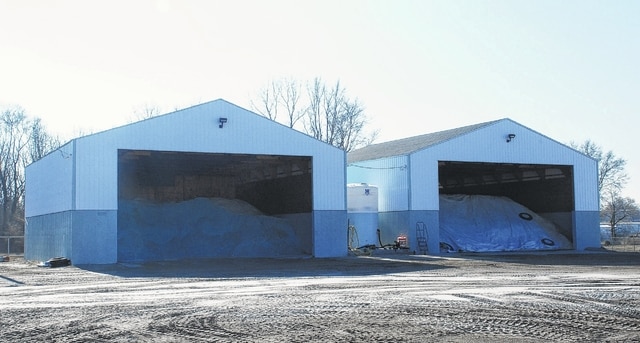
Unseasonably warm temperatures thus far this winter have left city, county and state road salt supplies virtually untouched when compared to the previous two winters.
Urbana Street Superintendent Colin Stein said the city began its 2015-2016 winter season, which runs from November to March, with nearly 800 tons of salt at its disposal. As of Jan. 25, the city has used around 120 tons or 15 percent of its supply.
“Our salt usage is well below average so far, but we do have February to go, and it can be very snowy,” he said.
During a significant winter weather event, Stein said, the city uses on average 50 to 70 tons of salt.
“Ice and long-lasting events use more salt,” he said.
Unless the weather takes a turn for the worst over the next two months, the city’s salt usage this year will be much lower than the 1,000 tons used last season. The main reason for this change, Stein said, is the warmer temperatures that have kept snow and ice to a minimum.
“Several weather events (this winter) have been rain, not snow, so above average temperatures have helped,” he said.
County salt supply in good shape
This past summer, the Champaign County Engineer’s Office participated in an Ohio Department of Transportation bid program and was able to purchase 1,000 tons of salt to double its supply in time for winter.
With Mother Nature keeping the temperatures warm and thus limiting snowfall and icy conditions, Engineer Stephen McCall said, to date, only 22.25 percent (445 tons) of the 2,000-ton salt stockpile has been used by the county (295 tons) and townships (150 tons).
Through the same time last winter, the county and townships combined to use 750 tons, while 2,176 tons were used through the end of January during the 2013-2014 winter season.
As for the total amount of salt used per winter season, McCall said, the county and townships over the past 10 years have combined to use an average of 2,000 tons per season with 2012-2013 being the lowest amount used (700 tons) and 2013-2014 being the highest amount (3,050 tons).
While the warmer weather is the main reason for less salt usage, McCall said, the county has been using more grit as opposed to salt over the past two winters, which has helped decreased the county’s need for salt.
“Because of the total (amount of salt) used in 2014 and the price increase from about $45 a ton to $75 a ton, we choose to go to a 3 to 1 grit to salt ratio (previously 2 to 1) and add liquid de-icers to our snow and ice removal,” he said. “The added liquid de-icers help the effectiveness of salt to melt ice and snow at lower temperatures and helps prevent the refreeze of the snow and ice.”
During the most recent winter storm that made its way through the county the week of Jan. 10, the county used 1,149 tons of 3 to 1 grit mix.
When plows are in continuous operation during a winter weather event, McCall said, the county uses on average 300 to 400 tons of grit mix per day.
“The usage is directly related to the number of snow and freezing events,” he said. “Not only are we called out to treat the county roads and to ensure they are passable during and after a snowstorm, but every freezing event we are watching for black ice and trying to respond to any dangerous conditions.”
Salting state routes
According to Mandi Dillon, ODOT public information officer, approximately 14,576 tons of salt have been laid down on District 7 routes between July 1, 2015, and Jan. 25. District 7 is comprised of the following counties: Auglaize, Champaign, Clark, Darke, Logan, Mercer, Miami, Montgomery and Shelby.
By this time last year, District 7’s salt usage was at 29,879 tons, considerably less than the winter of 2013-2014 when 70,685 tons of salt had been used by Jan. 25.
The last winter in which the district used less than 15,000 tons of salt through Jan. 25 was 2011-2012, when just 12,387 tons were used.
With the winter season not yet in the books, Dillon said, the numbers could change quickly as the district uses anywhere between 1,000 to 5,000 tons of salt per event.
“Every snowfall is unique, so it’s really difficult to know how much salt will be needed,” she said. “Factors such as wind, pavement, air temperatures and traffic volumes make each storm require different treatments.”


